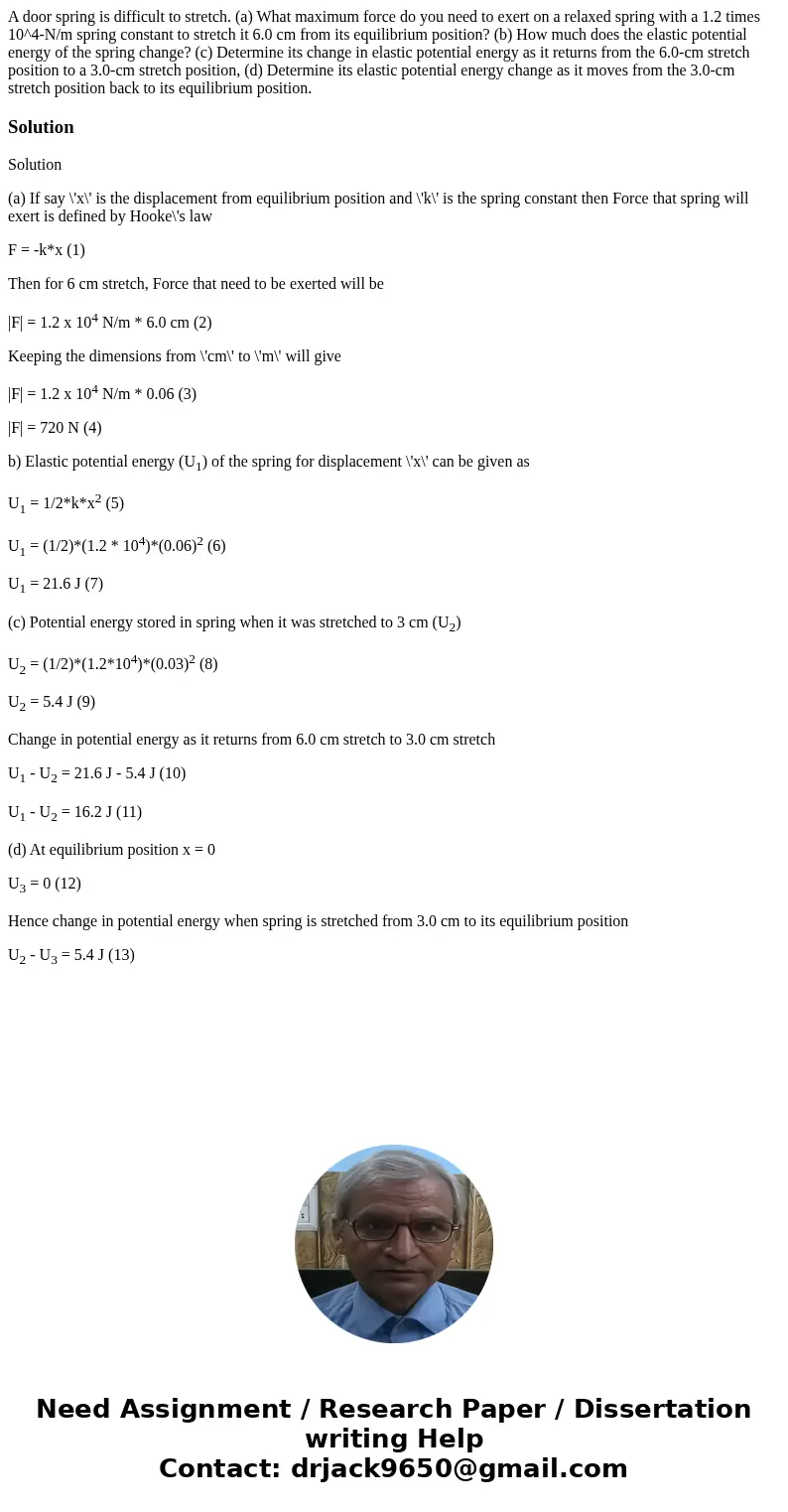A door spring is difficult to stretch a What maximum force d
Solution
Solution
(a) If say \'x\' is the displacement from equilibrium position and \'k\' is the spring constant then Force that spring will exert is defined by Hooke\'s law
F = -k*x (1)
Then for 6 cm stretch, Force that need to be exerted will be
|F| = 1.2 x 104 N/m * 6.0 cm (2)
Keeping the dimensions from \'cm\' to \'m\' will give
|F| = 1.2 x 104 N/m * 0.06 (3)
|F| = 720 N (4)
b) Elastic potential energy (U1) of the spring for displacement \'x\' can be given as
U1 = 1/2*k*x2 (5)
U1 = (1/2)*(1.2 * 104)*(0.06)2 (6)
U1 = 21.6 J (7)
(c) Potential energy stored in spring when it was stretched to 3 cm (U2)
U2 = (1/2)*(1.2*104)*(0.03)2 (8)
U2 = 5.4 J (9)
Change in potential energy as it returns from 6.0 cm stretch to 3.0 cm stretch
U1 - U2 = 21.6 J - 5.4 J (10)
U1 - U2 = 16.2 J (11)
(d) At equilibrium position x = 0
U3 = 0 (12)
Hence change in potential energy when spring is stretched from 3.0 cm to its equilibrium position
U2 - U3 = 5.4 J (13)

 Homework Sourse
Homework Sourse